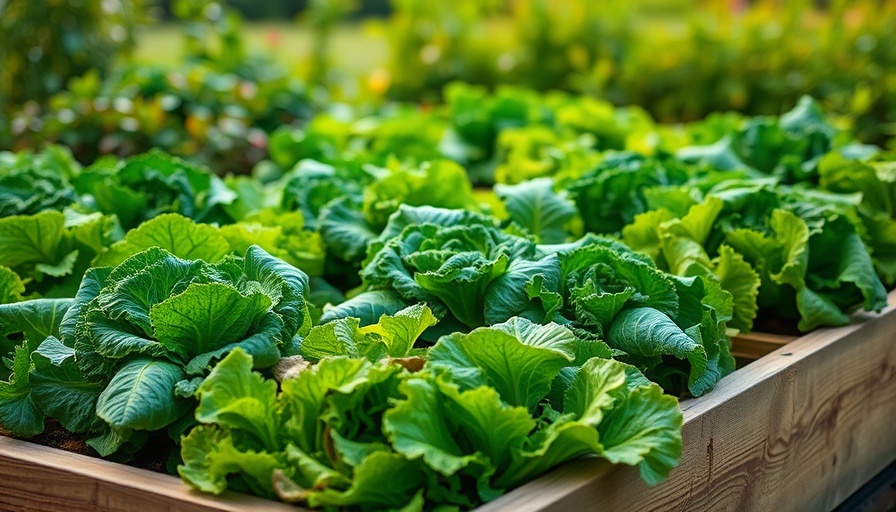
Unlocking the Benefits of Succession Planting for Home Gardens
Gardening is not only a cherished hobby for many but also a rewarding way to supply fresh produce right from your backyard. For those looking to maximize their produce yield and enjoy a longer harvest season, succession planting is an essential method to embrace. This technique not only helps in effectively utilizing garden space but ensures that you're not overwhelmed by a bumper crop all at once.
What Exactly is Succession Planting?
Simply put, succession planting is the practice of sowing seeds or transplanting crops at different intervals rather than all at once. This approach ensures a continuous harvest and minimizes the risk of crops all maturing simultaneously. You might stagger the planting of lettuce every couple of weeks or alternate planting cool-season crops like spinach before transitioning to warm-season favorites like tomatoes.
Why Should You Consider Succession Planting?
One of the most significant aspects of succession planting is the potential to maximize your harvest. With consistent sowing and replanting, your garden remains productive throughout the growing season. If pests or unfavorable conditions affect one group of plants, having a staggered planting strategy ensures you have others ready to thrive.
Extending Your Season: Timing is Everything
A key element of successful succession planting is understanding your local USDA Hardiness Zone. By knowing your last frost date in spring and the first est frost date in fall, you can strategically time your crops. This vigilance opens the door to a longer growing season, allowing you to continuously enjoy fresh produce.
Bringing Variety to Your Plate
Another reason to embrace this method is the exciting diversity it can bring to your meals. Instead of being inundated with a single vegetable, succession planting allows you to enjoy a rotation of flavors and colors, contributing to a more stimulating diet.
Practical Tips for Implementing Succession Planting
Starting with a planting calendar can alleviate the stress. Mark down the types of crops you want to plant and their respective timelines. For instance, you might plant baby greens in early spring, followed by mid-summer squash and fall roots. This helps you visualize your garden activities and ensures you keep track.
Meeting Challenges Head-On
As you embark on your succession planting journey, anticipate challenges. Weather conditions, pests, and soil health all play vital roles in your success. Embrace a proactive mindset—always have a backup plan, like extra seeds or pots indoors to compensate for plants that may disappoint.
Succession planting not only transforms the way you garden but allows for a fruitful relationship between you and your harvest. So, roll up your sleeves and step into your garden – with the right knowledge and technique, you can cultivate a bountiful supply of produce throughout the seasons!
Thinking about starting your own succession planting? Why not share your gardening journey with others or connect with fellow gardeners in your community? Together, you can swap tips, share successes, and create a more vibrant growing culture!
 Add Row
Add Row  Add
Add 




Write A Comment